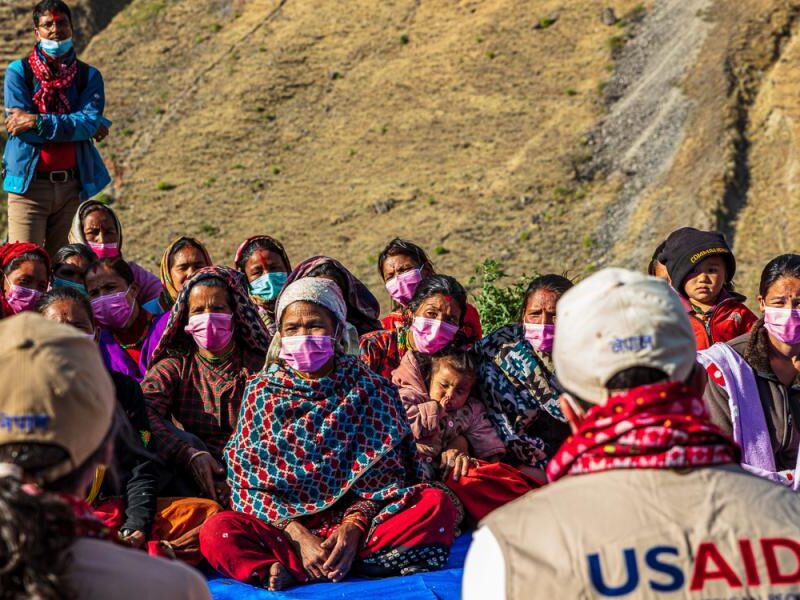Welcome to the second installment in our MEL Blog Series. Revisit our first post on developing learning frameworks and stay tuned for the final installment on using qualitative data to communicate effectively, coming soon.
How often do organizations prioritize learning from the inside out? At the Walton Family Foundation this kind of learning is part of the day-to-day culture. The Foundation’s Strategy, Learning, and Evaluation Department (SLED) leads this work by using monitoring, evaluation, and learning (MEL) to support both their grantees and the Foundation itself to make progress towards impact goals. EI currently serves as ‘thinking-and-doing’ partners to the Foundation’s Environment Program, helping SLED staff and program officers to ask better questions, effectively manage information, and make more informed decisions to guide adaptive management of their initiatives and investments.
I recently sat down with Kara Stevens, Senior Strategy, Learning, and Evaluation officer at the Foundation, to hear her perspective on the value of strategic learning, the unique ways that foundations can apply MEL, and importantly – how to avoid getting lost in the details.
How is the Walton Family Foundation using monitoring, evaluation, and learning to advance impact and improve over time?
The Foundation creates impact by funding grantees across our three program areas: our home region of Northwest Arkansas and the Arkansas-Mississippi Delta, K-12 education, and the environment. I support our Environment Program on all things related to measuring and understanding the impact of our work.
We recently pivoted to more of a strategic learning frame as we launch our new five-year strategic plan. In addition to building our muscle internally with strategic learning, we will continually look to engage our grantees and other partners to identify key questions and share what we are learning more broadly. As always, we are asking, if we didn’t meet our goals then what can we learn from it? And what do we need to adjust going forward?
What’s unique about the Foundation’s approach to strategic learning?
What I find valuable about the Foundation’s approach is that we are really clear about what our goals are, which is a key part of understanding whether or not you are making progress. We are doing complex work. MEL can provide the north star, so we know if we are going in the right direction even as we adapt along the way.
Culture is also an important aspect of our strategic learning. We have a great team that’s curious, asks tough questions, and really focuses on impact. Our Program Officers are committed to asking the right questions and our job on the SLED team is to support them in asking and addressing those questions. In addition, we benefit greatly by having leadership who care deeply about MEL and dedicate resources to it, that is invaluable.
How are grantees involved in Walton Family Foundation’s strategic learning processes?
We involve grantees in monitoring a lot. As an example, we have some complicated multi-stakeholder policy goals that require different types of grantees. So, we often bring our grantees together to have them define success, our targets, and some annual milestones to know that we’re getting there. We also ask for feedback on whether we’re measuring the right things.
Trust between grantees and program officers is also essential to our process. We try to send the message that we are working on extremely complex issues and many outcomes are outside our control – we would rather try to climb Mount Everest together and not quite get there, than try to climb a bunch of molehills and succeed. Nobody wants to fail or miss a target, but we’re open about having conversations about what’s not working and why, and then trying to learn from it.
Can you tell us a bit more about the Environment Program’s new 5-year strategy?
The new strategy is super exciting. We have a lot of successes that we are building on from the last strategy, and there are a couple of areas where we are pivoting. For example, we will have an increased emphasis on climate, a focus on the links between climate and water, and on community engagement. Other consistent Foundation strengths that will continue include using market incentives to drive sustainability. All in all, the core of our work across the program is to find solutions that work for people and nature.
We brought on EI to help support our MEL work for the new strategy because we needed support to complement our previous work and to do it more efficiently. EI has served as an important thought partner. I appreciate EI’s frank assessment, guiding us to think about how we will use the data, in what frequency, and who needs to use it. Those are questions that we can sometimes forget to ask ourselves as we get caught up in the details.
Finally, any advice to others from what you’ve learned in your MEL career?
One thing I try to revisit in my own work and with our programs and grantees, is that the reason we are doing this is to drive impact on the big issues, like climate change and sustainable fisheries. That’s why we do the work. We can sometimes get lost in counting things or maybe ask the wrong questions. My advice is to stay focused on the prize, and the prize is solving big environmental problems.
Learn more about EI’s work with the Walton Family Foundation here.
About the Authors
Kara Stevens is a Senior Strategy, Learning, and Evaluation Officer supporting the Environment Program at the Walton Family Foundation. She has over 18 years of experience measuring and evaluating program effectiveness in conservation and international development.
Katie Riley is a Senior Associate at Environmental Incentives and leads our Habitat Team. She has over 11 years of experience with program design and adaptive management and has supported the development of dozens water quality and habitat programs across the Western United States and Mexico.



